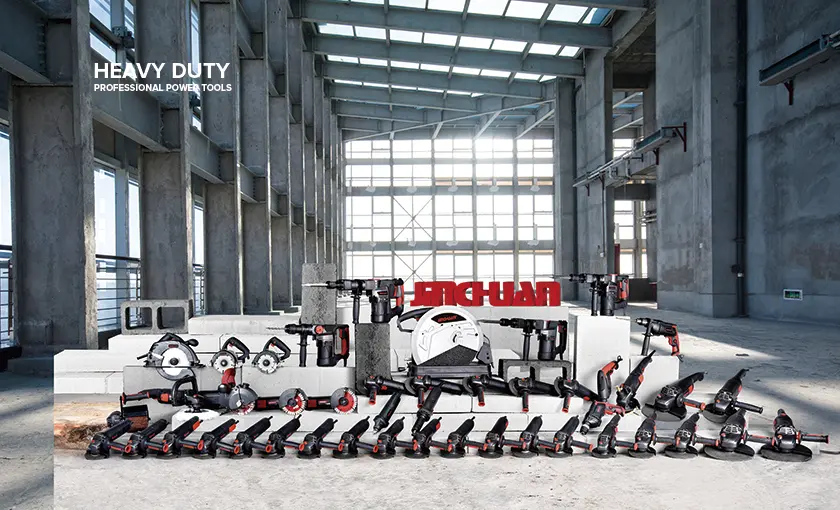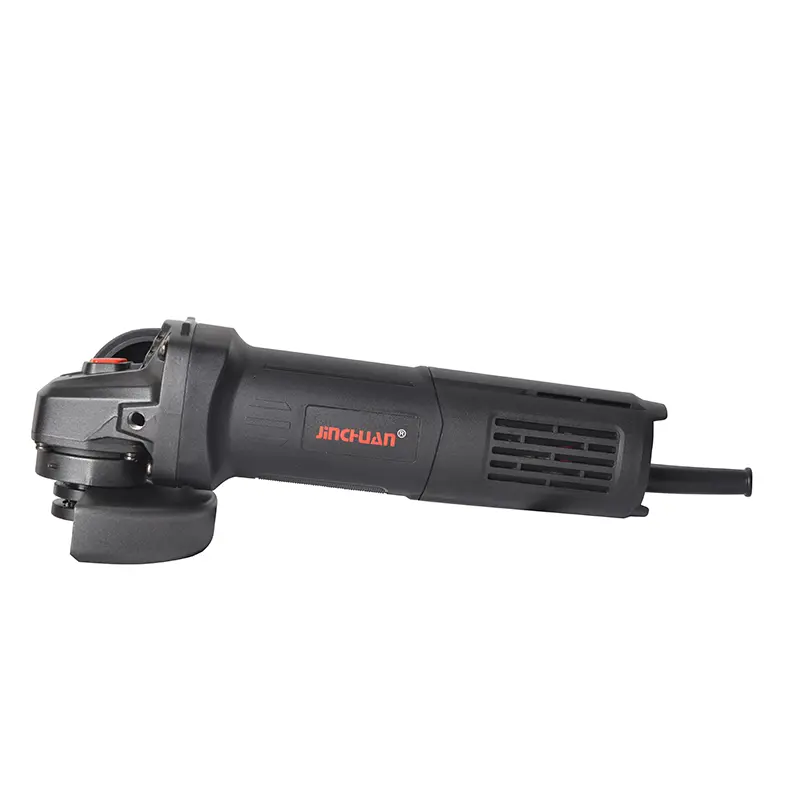In the industrial tool supply chain, Angle grinders, as high-frequency and high-load equipment, their quality stability directly affects the operational efficiency and safety of end users. Although suppliers usually reduce defect rates through quality control processes, occasional batch quality issues (such as batch motor abnormal noise, loose grinding wheel shafts or cracked casings) may still occur due to factors like raw material fluctuations, process deviations or transportation losses. If such issues are not handled properly, they will not only lead to project delays and customer complaints, but also may damage long-term cooperative relationships. At this point, how to efficiently collaborate with suppliers to solve problems has become a key capability in supply chain management.
First, quick response: Clearly define the scope of the problem and the level of impact
When batch quality problems of Angle grinders are discovered, the first step is to quickly locate the problem boundary to avoid misjudgment due to ambiguous information. The initial assessment needs to be carried out from three dimensions:
• Problem type: Is it a single defect (such as insufficient torque of the grinding wheel chuck in all products) or a compound problem (such as motor overheating accompanied by housing deformation)?
• Impact scale: Does it involve all products of the current batch, or only a portion produced during a specific production period or on a production line?
• Risk level: Does it directly affect usage safety (such as insulation failure), or merely reduce the user experience (such as appearance scratches)?
Through on-site spot checks (it is recommended to follow AQL 2.5 or stricter standards), summary of user feedback and traceability of production records, the specific manifestations and affected scope of the problems are clarified. For instance, if multiple customers report “abnormal vibration of the main shaft during the operation of the Angle grinder”, it is necessary to synchronously record the rotational speed, load conditions at the time of vibration occurrence, as well as the serial number range of the problem product, to provide data support for subsequent analysis.
Second, transparent communication: Establish a dialogue framework of “problem – data – demand”
Communication with suppliers should be based on objective facts rather than subjective speculation, and emotional expressions should be avoided. It is recommended to convey the following key information through structured meetings or written reports:
• Problem description: Describe the defect with specific parameters (for example, “10% of the products have a motor housing temperature exceeding 70℃ after running no-load for 5 minutes, which is 5℃ higher than the industry standard”).
• Impact evidence: Attach customer complaint records, test reports or on-site photos/videos to enhance persuasiveness.
• Core demand: Clearly define the expected solution direction (such as rework, recall, compensation or process improvement), rather than directly specifying the handling method.
At the same time, invite suppliers to participate in the problem analysis – they often have a better understanding of the details of their own production processes (such as welding parameters, bearing assembly procedures), and may be able to identify potential causes faster than the purchasers. For instance, a certain batch of Angle grinders encountered the issue of “switch contact adhesion”. The supplier, after checking the production logs, found that the contact material of a certain model that was recently replaced was prone to oxidation in a humid environment. However, this problem was not triggered in the regular tests conducted by the purchaser.
Third, collaborative diagnosis: Dig out the root cause from the surface
The root cause of batch problems is usually hidden in some link of the production chain and requires joint investigation by the technical teams of both sides. Common analytical directions include:
• Raw materials: Are there any performance differences in the core components of the Angle grinder (such as motor stator coils and grinding wheel shaft steel) due to the supplier’s batch change? For instance, insufficient purity of copper wire may lead to an increase in resistance, causing the motor to overheat.
• Process parameters: Does the welding temperature, assembly torque or surface treatment process deviate from the standard? For instance, if the tightening torque of the grinding wheel chuck is insufficient, it might be due to the failure of the pneumatic wrench calibration.
• Environmental factors: Do the vibrations during transportation and the temperature and humidity of the storage environment cause hidden damage to the product? For instance, a damp environment may cause a short circuit in the circuit board.
Both parties can gradually narrow down the scope of the problem by comparing the production records of the “problem batch” and the “normal batch” (such as raw material inspection forms, equipment operation parameters, and operator shift schedules). When necessary, third-party testing institutions can be collaborated to conduct physical and chemical analyses (such as metallographic testing and hardness testing) on key components to ensure the objectivity of the conclusions.
Fourth, solution: Balance short-term remediation with long-term improvement
Based on the diagnosis results, work with the supplier to formulate a phased handling plan:
• Short-term remedial measures: For the problem products that have been delivered, negotiate return and exchange, on-site repair or discount compensation plans to prioritize the protection of customer rights and interests. For instance, for products with overheated motors, free services such as replacing heat sinks or upgrading insulation materials can be provided.
• Mid-term adjustment: Require suppliers to implement temporary control over the production process (such as adding 100% full inspection for key procedures) and re-inspect the undelivered products of the same batch.
• Long-term improvement: Encourage suppliers to optimize their quality control systems, such as introducing SPC (Statistical Process Control) to monitor key parameters, or providing targeted training for employees. At the same time, the quality acceptance standards for subsequent batches can be agreed upon (such as increasing the sampling ratio for vibration tests and durability tests).
It is worth noting that the solution should clearly define the division of responsibilities and time nodes (for example, “Suppliers need to submit the process improvement plan within 5 working days and complete the re-inspection of inventory products within 10 working days”), and solidify the consensus through written agreements to avoid subsequent disputes.
Fifth, rebuilding trust: Transform crises into opportunities for upgrading cooperation
The handling of batch issues is not only about “putting out fires”, but also an opportunity to test the resilience of the supply chain. Through this collaboration, a closer communication mechanism can be established with suppliers
• Regularly share quality data (such as monthly defect rate reports, summaries of customer usage feedback);
Jointly formulate the acceptance criteria for key components (such as the temperature rise limit of the motor and the runout tolerance of the grinding wheel shaft);
Explore joint improvement projects (such as jointly developing more durable heat dissipation structures).
This kind of in-depth cooperation based on problem-solving often drives both sides to shift from a “buyer-seller relationship” to a “strategic partnership”, ultimately achieving a dual improvement in product quality and supply stability.
In the field of industrial tools, quality issues cannot be completely avoided. However, through rapid response, transparent communication, collaborative diagnosis and long-term improvement, both purchasers and suppliers can minimize the impact of batch problems and take this opportunity to strengthen their cooperative relationship. After all, a truly reliable supply chain is precisely refined through the handling of one crisis after another.
Post time: Nov-12-2025


